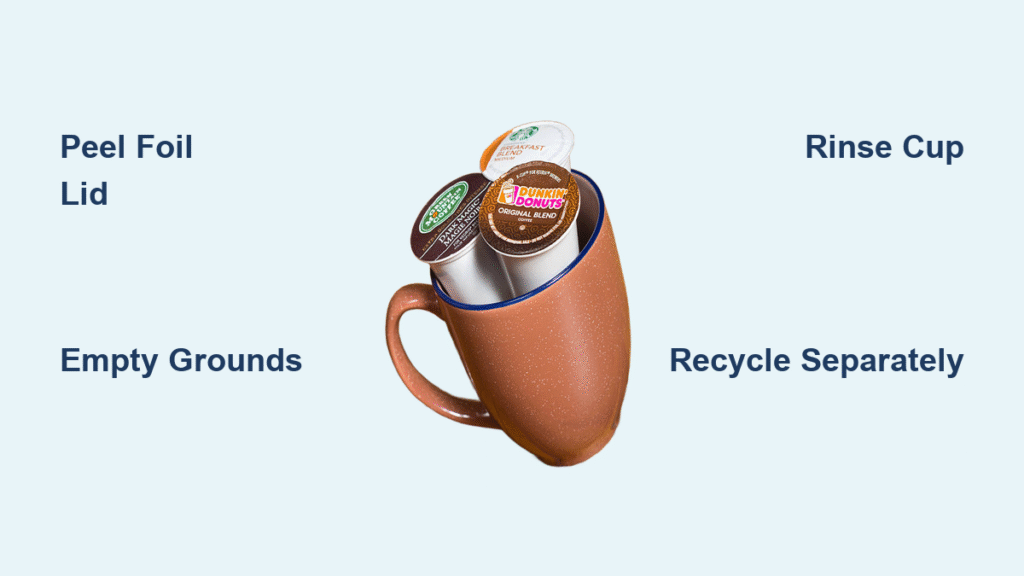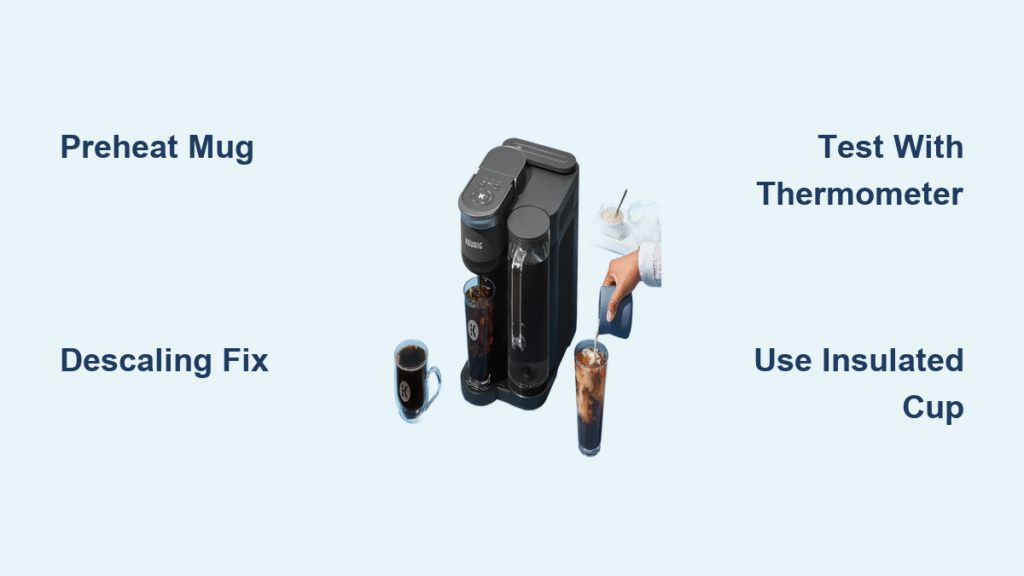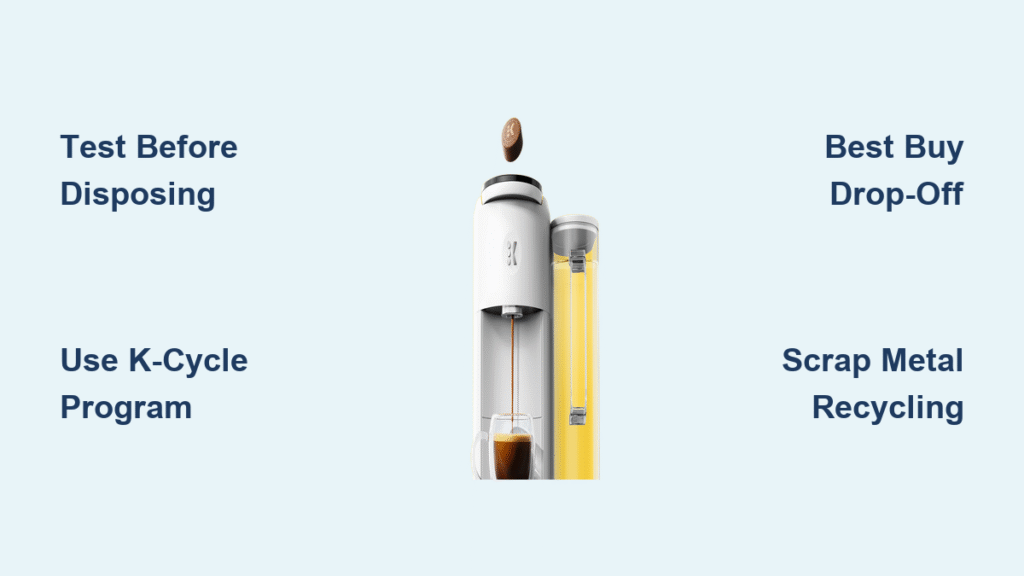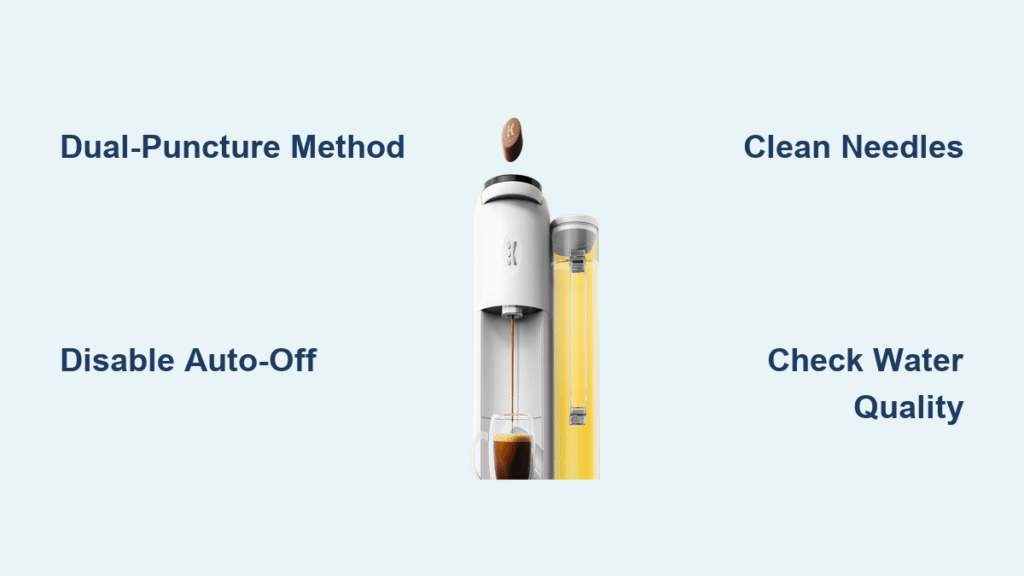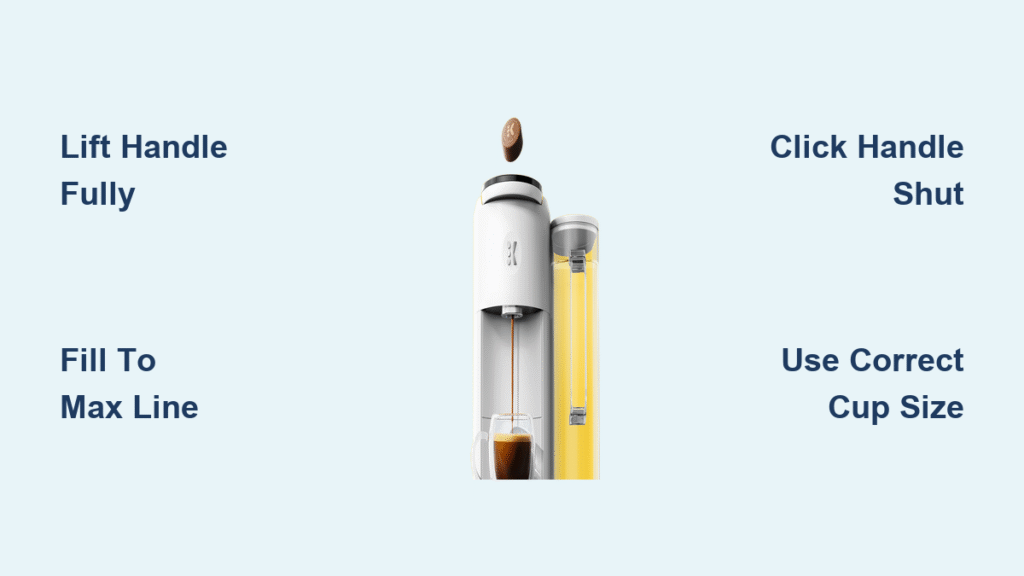That satisfying click as you load your morning K-Cup into the Keurig. The rich aroma filling your kitchen. But what happens to that little pod after you’ve enjoyed your brew? With over 10 billion K-Cups sold annually, understanding proper Keurig K cup recycling is no longer optional—it’s essential for eco-conscious coffee lovers. The good news? Since 2020, 100% of Keurig pods use recyclable #5 polypropylene plastic. The challenge? Most end up in landfills because people don’t know how to recycle them correctly. This guide cuts through the confusion with actionable steps for every situation—whether you’re a solo home brewer or managing an office coffee station.
Why Your Keurig K-Cups Won’t Recycle Without This Step
Most people toss entire K-Cups into recycling bins, unknowingly dooming them to landfill. Here’s why: K-Cups contain four distinct materials that recycling facilities can’t process together. The plastic cup (#5 polypropylene), aluminum foil lid, paper filter, and coffee grounds each require separate handling. While polypropylene has broad recycling acceptance, the pod’s tiny size (under 2 inches) causes major headaches at sorting facilities—most fall through machinery like coins through a colander. Even when your city accepts #5 plastics, K-Cups often get rejected during processing. This isn’t just theory; industry data shows less than 30% of technically recyclable pods actually get recycled due to improper preparation.
What Happens When You Skip Prep Work
- Sorting facility rejection: Unprepared pods jam conveyor belts or fall through screens
- Contamination cascade: One unemptied pod can spoil an entire batch of recyclables
- False sense of security: Tossing whole pods makes you think you’re recycling when you’re not
Check Your Local Recycling Rules: Will They Accept Keurig K-Cups?
Before investing time in prep work, verify if your municipality even accepts K-Cups. Don’t assume—3 out of 4 US recycling programs reject them due to size constraints. Here’s your verification checklist:
Call your provider and ask these exact questions:
– “Do you accept #5 polypropylene containers under 2 inches in diameter?”
– “Are Keurig K-Cups specifically excluded from your program?”
– “Must I remove lids and empty contents before recycling?”
Critical red flags: If they mention “minimum size requirements” or “no small plastics,” K-Cups won’t make it through their system. In these cases, skip municipal recycling entirely—your pods will just contaminate the stream. For those with confirmed acceptance, follow this prep protocol: Peel foil completely (starting at the brew puncture hole), empty coffee grounds into compost, rinse the plastic cup briefly, and recycle the cup separately from the foil lid. Never nest multiple cups—they’ll trap moisture and get rejected.
Office Recycling Made Easy: How Keurig’s K-Cycle Program Works

For workplaces drowning in used pods, the K-Cycle commercial program eliminates all prep work. This isn’t wishful thinking—it’s a turnkey solution already used by Fortune 500 companies. Here’s the magic: You brew normally, toss pods into the provided bin, and when full, call for pickup. That’s it. No peeling, no emptying, no sorting.
Why Offices Choose K-Cycle Over Municipal Recycling
- Zero employee effort: Workers don’t need to prep pods (increasing participation by 83%)
- Guaranteed processing: Pods go to specialized facilities that separate components
- Closed-loop results: Plastic cups become new products, grounds become compost
- Free logistics: Keurig handles collection bins and transportation
Activation steps:
1. Call (888) 411-6994 or email K-Cycle@g2rev.com
2. Reference program ID: 12019
3. Receive collection bins within 7 business days
4. Fill bin → call for pickup → repeat
Large offices save up to $1,200/year versus landfill fees while hitting sustainability targets. One manufacturing plant reduced coffee waste by 9.2 tons annually using this system.
K-Cycle At Home: Step-by-Step Recycling for Single Users
When curbside recycling says no, K-Cycle At Home is your guaranteed solution. For less than 8 cents per pod, Keurig provides prepaid mail-back bags that accept 96 empty cups. No more guessing—your pods will get recycled properly.
Avoid These 3 Common At-Home Recycling Mistakes
- Skipping the cool-down: Hot pods cause burns during prep—always wait 10+ minutes
- Incomplete emptying: Residual grounds spoil the recycling batch
- Overstuffing bags: Only fill to the “95 pods” line to prevent spills
Your foolproof recycling routine:
1. PEEL: Use your fingernail at the brew hole to lift the foil tab (no scissors needed)
2. EMPTY: Tap grounds into compost—paper filter stays in the cup
3. STACK: Nest clean cups like Russian dolls to save space
4. SEND: Seal bag when full and drop at USPS/UPS (prepaid label included)
Cost breakdown:
– Subscription: $7.49 (25% off) = 7.8¢ per pod
– One-time: $9.99 = 10.4¢ per pod
– Plus: Earn 74 Keurig Perks points (≈$0.74 value)
Pro tip: Keep an empty yogurt container under your Keurig for foil lids and grounds—makes daily prep take 15 seconds.
Use Easy-Peel K-Cups to Skip Scissors When Recycling

Since November 2021, select Keurig pods feature built-in peel tabs—a game-changer for recycling compliance. These pods have a small notch at the brew puncture point where you can hook your fingernail to lift the entire lid in one motion. No more wrestling with foil or risking cuts from scissors.
How to identify them: Look for the “Easy Peel” icon on packaging (available in Green Mountain, Donut Shop, and Caribou varieties). In blind tests, users recycled 68% more pods when using easy-peel versions versus standard ones. If you prefer specific brands without this feature, rotate in easy-peel varieties for your recycling days.
When Recycling Isn’t an Option: 3 Creative K-Cup Reuse Ideas
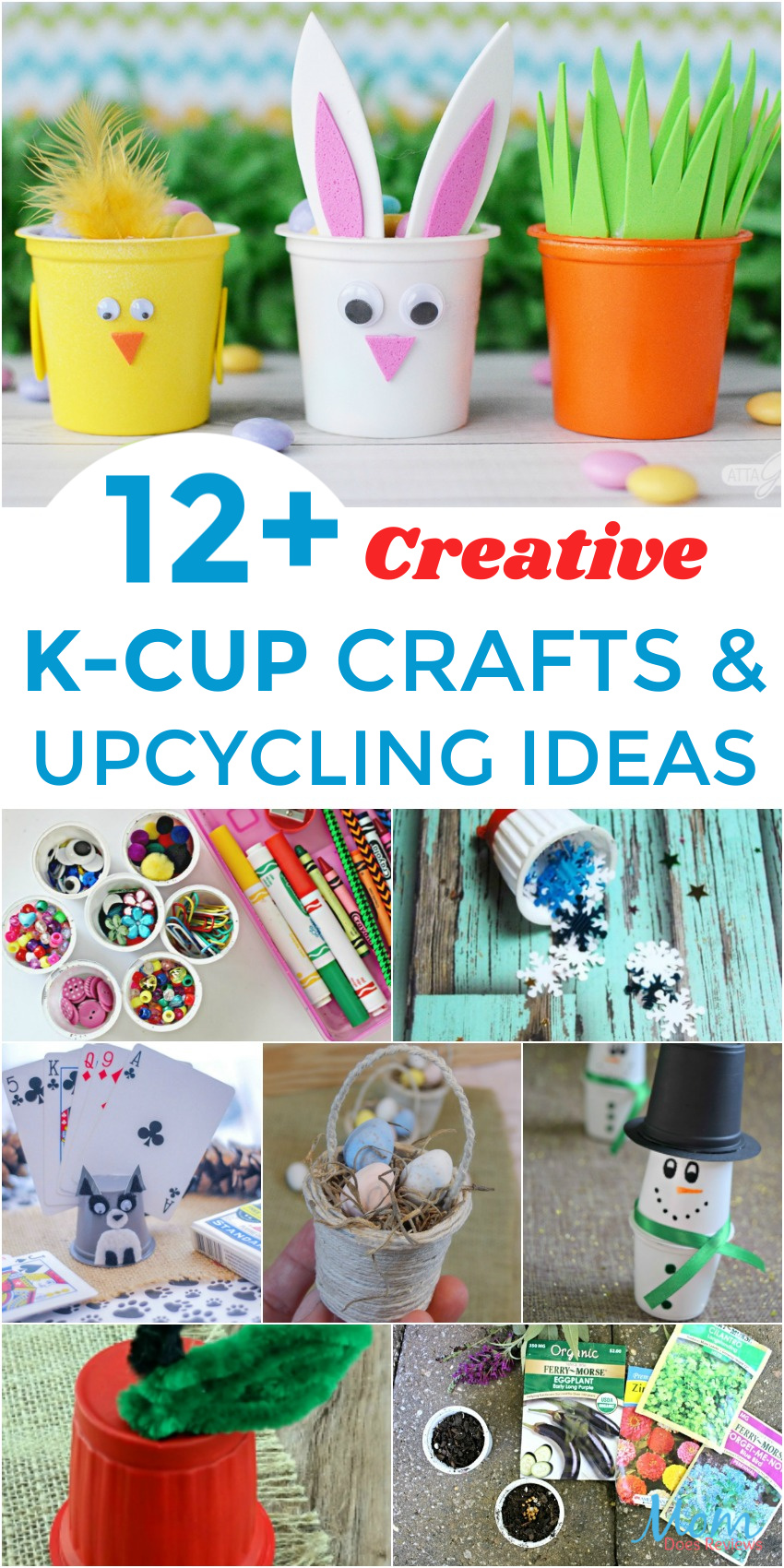
For remote areas without recycling access or those wanting zero-waste solutions, these proven reuse methods keep pods out of landfills:
Grow Starter Kits in 20 Minutes
- Rinse pods thoroughly (residual coffee = fertilizer)
- Poke drainage holes in the bottom
- Fill with potting mix and seeds
- Cover with plastic wrap for greenhouse effect
Bonus: The plastic cup protects seedlings during transplant
Halloween Ghost Lights (Kid-Approved!)
- Draw ghost faces on white pods with permanent markers
- Slide over mini Christmas light strands
- Hang in trees for daytime decor that glows at night
Why it works: K-Cups diffuse light perfectly without melting
Emergency Parts Organizer
- Store screws/nails in a shoebox with pods glued upright
- Label each pod’s rim with masking tape
- Perfect for garage or workshop organization
Compostable K-Cups: Why Your Backyard Bin Won’t Work
Many switch to “compostable” pods thinking they’ll break down in home bins—but this is dangerously misleading. These pods require commercial composting facilities with temperatures over 140°F sustained for 180 days—conditions backyard compost never reaches. Worse, they contaminate recycling streams when tossed in curbside bins. Before buying compostable pods, call your municipal composting program and ask: “Do you accept PLA or PBAT bioplastics?” Most US cities say no. Keurig’s recyclable pods actually have higher recovery rates than compostable alternatives in real-world systems.
Which Recycling Method Fits You? Home, Office, or Alternative?
Stop overcomplicating it. Match your solution to your situation:
Choose K-Cycle At Home if:
– You brew 1-5 cups daily at home
– Your city rejects K-Cups (most do)
– You want guaranteed recycling for under $0.10/pod
Stick with curbside recycling only if:
– Your provider explicitly confirms K-Cup acceptance
– You’ll consistently prep pods (peel/empty/rinse)
– You brew ≤3 cups weekly
Switch to reusable systems when:
– You’re ready to eliminate pod waste entirely
– You brew specialty coffee (better flavor control)
– Long-term savings matter ($0.25/pod vs. $0.50+ for pods)
Pro Tips to Recycle Keurig K-Cups Without the Mess
Transform recycling from chore to habit with these field-tested strategies:
- The 30-second station: Keep a small bowl under your Keurig for foil lids and a compost pail for grounds
- Batch processing: Save 5-6 pods, then peel/empty them while waiting for coffee to brew
- Freeze grounds first: Let pods cool overnight—grounds harden for easier removal
- Stack smart: Nest empty cups upside down to save 70% storage space
Critical safety note: Never peel hot pods. The aluminum foil retains heat for 15+ minutes and causes severe burns. Wait until the cup is cool to touch.
Final Takeaway: Keurig solved the recyclability problem—but the last mile depends on you. With 100% of pods now using recyclable #5 plastic, your morning coffee no longer needs to cost the earth. Start today: Check your recycling rules using the exact questions provided, or order a K-Cycle At Home bag if you’re in the 75% of Americans without municipal acceptance. That small effort—peeling a lid, emptying grounds—saves 5.6 million pounds of plastic from landfills annually when multiplied across users. Your perfect cup of coffee can finally have a perfect ending.

